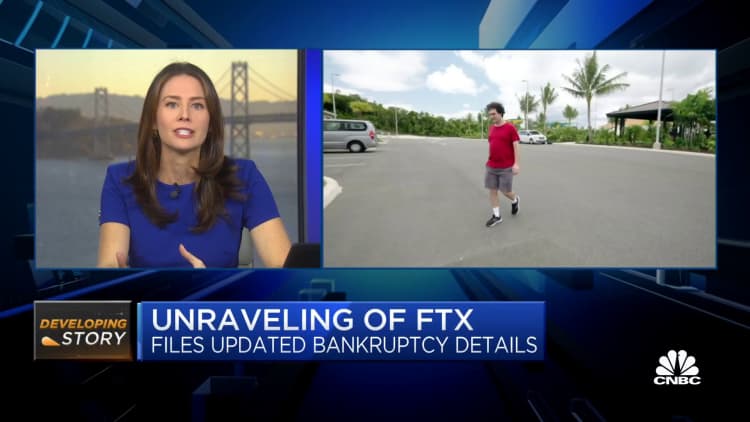Ether has hugely outperformed bitcoin since both cryptocurrencies formed a bottom in June 2022. Ether’s superior gains have come as investors anticipate a major upgrade to the ethereum blockchain called “the merge.”
Yuriko Nakao | Getty Images
If all of the recent upheaval in the crypto space has you on the verge of selling, there’s another option worth exploring. Cold storage can protect your digital assets by taking them offline and harboring your crypto in a digital wallet. Since these digital wallets aren’t connected to the internet, they’re less susceptible to hacks.
The recent downfall of FTX is a great example of why it pays to hold some, or all of your cryptocurrency in cold storage. When your crypto is on an exchange, like FTX, you can only access those assets if the exchange is able to distribute your funds to you. If that exchange gets hacked or is mismanaging funds, your money might be gone.
The downside of cold storage is that your assets are less liquid and harder to trade quickly, since you have to go through various protective steps to access your funds.
If you’re interested in moving your crypto into cold storage, here’s how to get started.
Types of cold storage wallets
There are a number of cold storage wallets you can buy to get started. Not all cold storage wallets support every token. Here are some of the most popular options.
Ledger
Leger has two cold storage wallets on the market: the Ledger Nano S Plus which costs $79 and the more expensive Ledger Nano X.
Depending on which model you get, these devices can either be connected to your computer with a USB cable and an iOS or Android enabled mobile device, or with Bluetooth capability.
It supports over 5,500 types of cryptocurrency. It is worth noting that Ledger experienced a hack in 2020, in which 1 million email addresses were leaked, but no crypto assets were stolen.
Trezor
Trezor has an entry-level model that costs $72, as well as the Model T which costs $213.
The $213 cold storage wallet is similar to the Ledger Nano X, except it doesn’t have Bluetooth capability. This is intentional, since some are concerned Bluetooth can be susceptible to hacks. It’s also compatible with a web browser, desktop OS, and it’s supported by Android. However, there’s no support for iOS.
Ellipal
Instead of using USB or Bluetooth connections, Ellipal’s Titan wallet uses QR codes and starts at $119.
This device supports over 10,000 types of tokens.
How to move your cryptocurrency to cold storage
It’s important to buy your cold storage wallet directly from the manufacturer. The last thing you’d want to do is end up with a device that has been set up with a known password, designed to defraud you.
1. Plug your cold storage device into your computer.
2. Download the software provided with your cold storage wallet.
3. You’ll be given a seed phrase or backup code. It’s best to keep this code offline and safe, somewhere where it won’t be lost or accessible by others. Write it down on a piece of paper and put it in a safe.
4. Each type of cryptocurrency (such as bitcoin, ethereum, or tether) needs its own wallet. Follow the instructions to create a new wallet for each type of crypto you are trying to store.
5. To access your device, you’ll have to set up a pin.
6. Once you have a pin, you’ll be able to add your crypto to your cold storage wallet by clicking receive, which will show you your cold storage wallet’s address.
7. To take your cryptocurrency off of an exchange, log on to the exchange and send the digital assets to the address of your cold storage wallet.
Keep your cold storage somewhere safe and remember, if you lose it along with your seed phrase, your money can’t be recovered. If you lose your hardware wallet, but still have your seed phrase, you can buy another hardware wallet and access your assets.
It’s a little risky knowing that if you misplace this device along with the seed phrase, there’s nothing you can do, but at least you have full custody of your assets, unlike when your digital assets are tied to an exchange.





